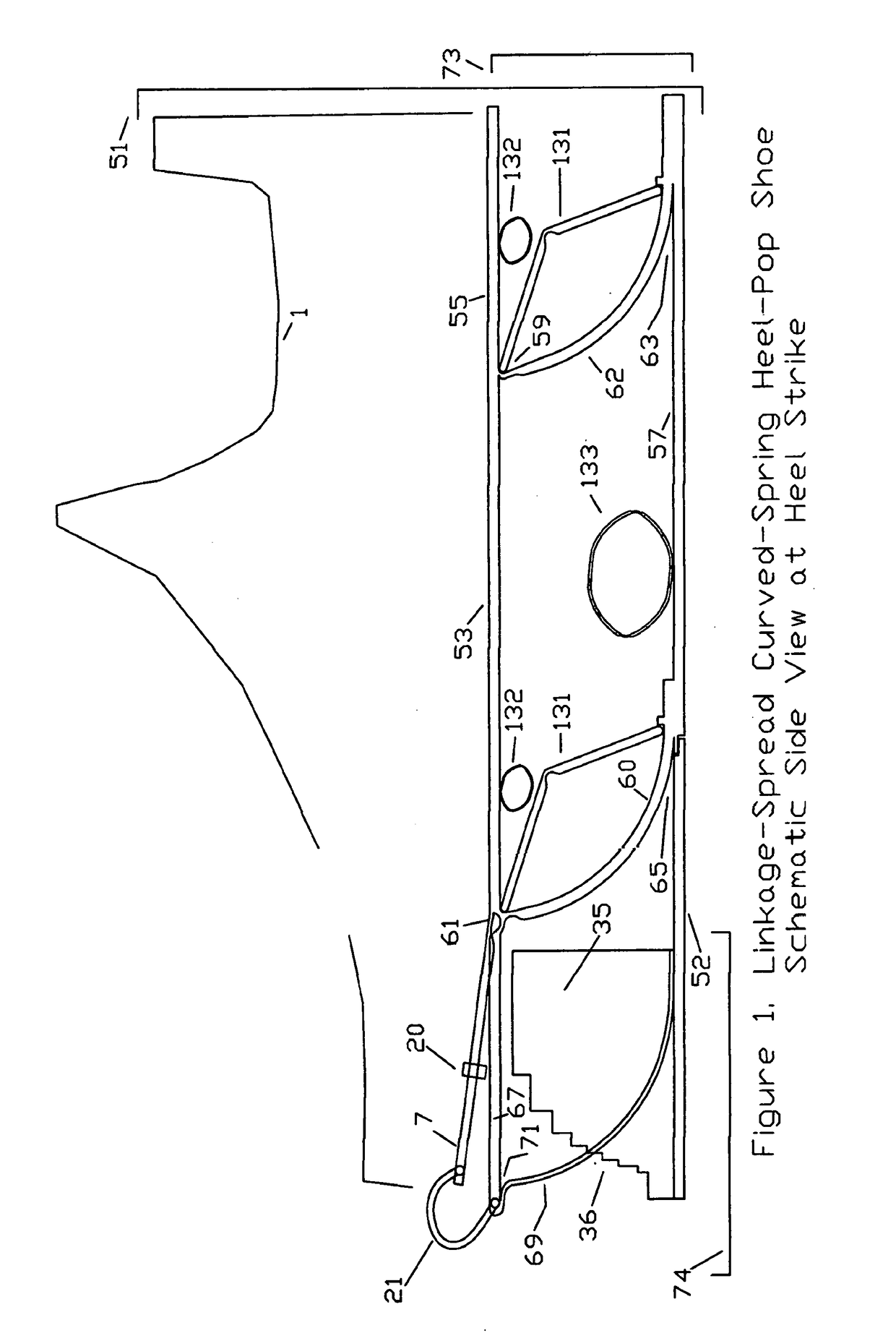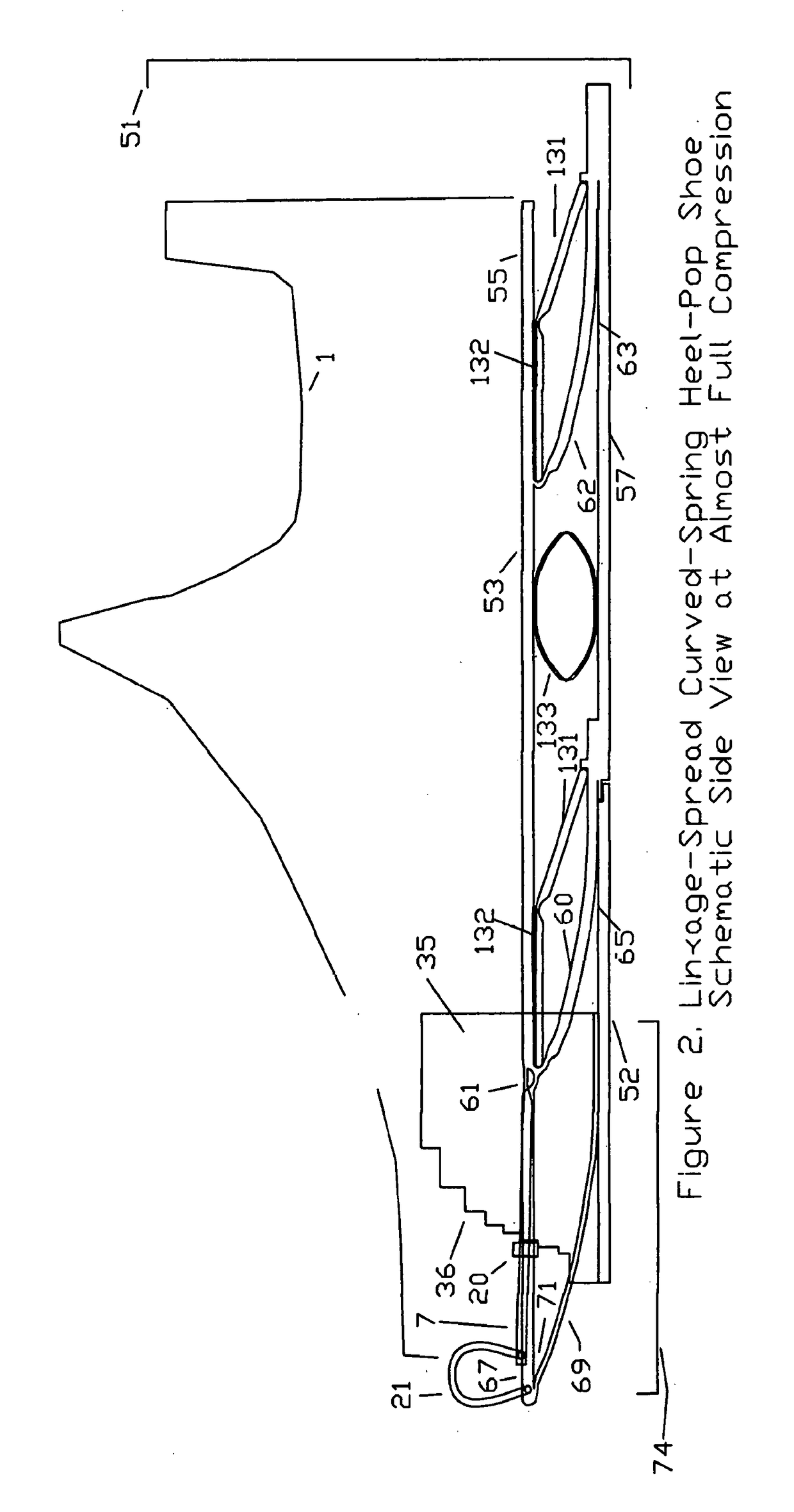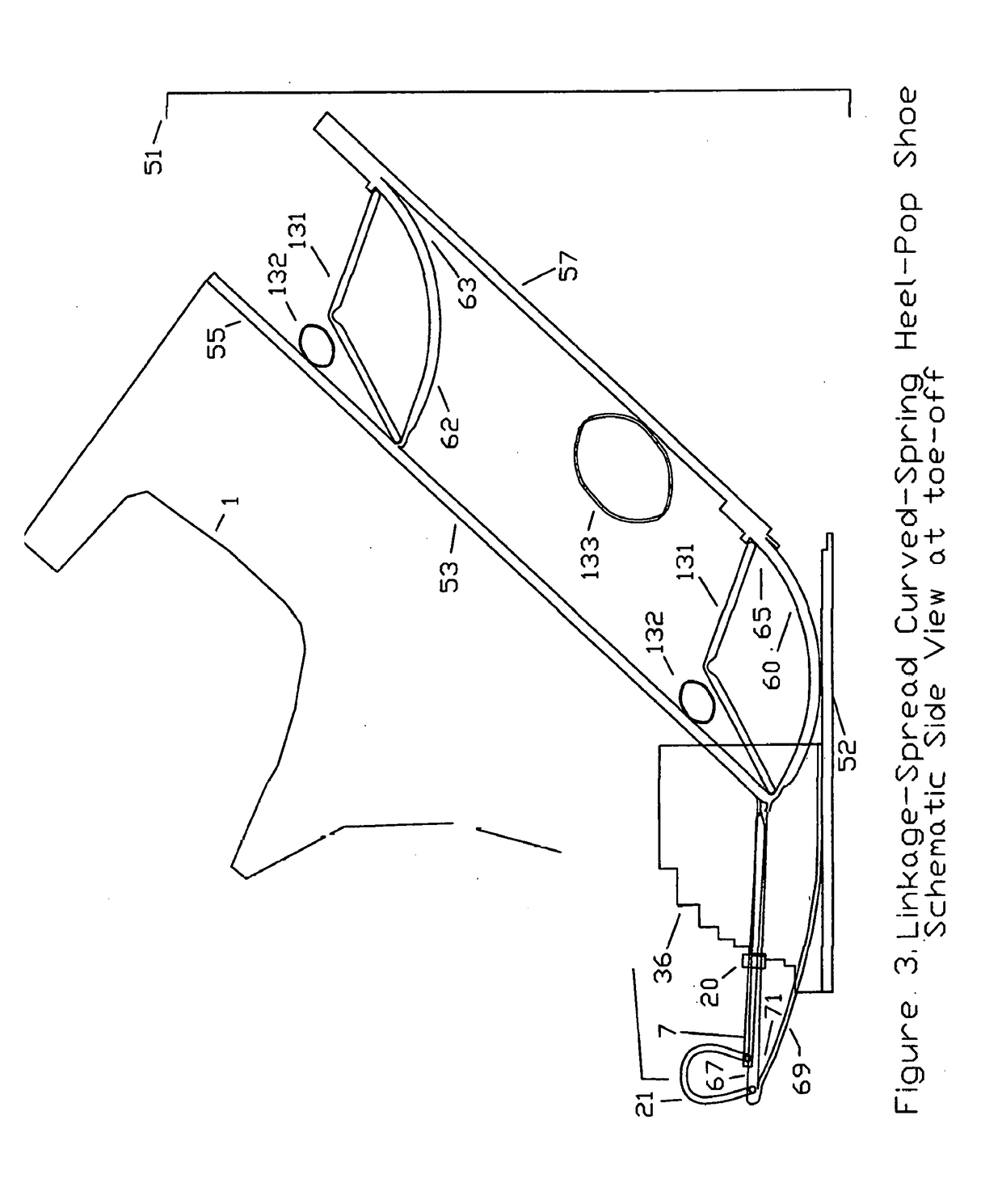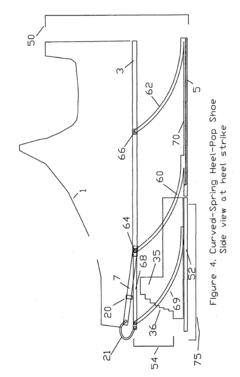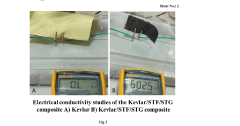Kevlar's Impact on Modern Construction Tool Technologies
JUL 10, 20259 MIN READ
Generate Your Research Report Instantly with AI Agent
Patsnap Eureka helps you evaluate technical feasibility & market potential.
Kevlar in Construction Tools: Evolution and Objectives
Kevlar, a high-strength synthetic fiber developed by DuPont in the 1960s, has revolutionized the construction tool industry since its introduction. Initially designed for use in tires, Kevlar's exceptional strength-to-weight ratio and durability quickly found applications in various fields, including construction tools. The evolution of Kevlar's use in this sector has been marked by continuous innovation and adaptation to meet the changing demands of the construction industry.
In the early stages of its adoption, Kevlar was primarily used to reinforce hand tools, such as hammers and screwdrivers, enhancing their durability and reducing weight. As manufacturing techniques improved, Kevlar began to be incorporated into more complex tools, including power tools and safety equipment. This evolution has led to the development of lighter, stronger, and more efficient construction tools that have significantly improved worker productivity and safety on job sites.
The primary objectives driving the integration of Kevlar into construction tools have been to increase tool lifespan, improve safety, and enhance overall performance. By reducing tool weight without compromising strength, Kevlar has enabled the creation of tools that are easier to handle for extended periods, reducing worker fatigue and the risk of repetitive strain injuries. Additionally, Kevlar's high tensile strength and resistance to cuts and abrasions have made it an ideal material for protective gear, such as gloves and safety harnesses, further improving workplace safety.
Another key objective has been to improve the efficiency and precision of construction tools. Kevlar's unique properties have allowed for the development of more precise cutting tools, such as saw blades with thinner kerfs, resulting in cleaner cuts and less material waste. In power tools, Kevlar reinforcement has led to more durable components that can withstand higher operational speeds and temperatures, enhancing tool performance and reliability.
The ongoing evolution of Kevlar in construction tools is driven by the industry's push towards sustainability and energy efficiency. Current research focuses on developing Kevlar composites that are even lighter and stronger, potentially leading to tools that require less energy to operate. There is also a growing interest in exploring Kevlar's potential in 3D printing applications for custom tool manufacturing, which could revolutionize how construction tools are produced and customized for specific tasks.
As the construction industry continues to evolve, with increasing emphasis on prefabrication and modular construction techniques, the role of Kevlar in construction tools is expected to expand further. Future objectives may include the development of smart tools incorporating Kevlar and electronic components, enabling real-time monitoring of tool performance and worker safety. The ongoing research into Kevlar's properties and potential applications ensures that this remarkable material will continue to shape the future of construction tool technologies, driving innovation and efficiency in the industry for years to come.
In the early stages of its adoption, Kevlar was primarily used to reinforce hand tools, such as hammers and screwdrivers, enhancing their durability and reducing weight. As manufacturing techniques improved, Kevlar began to be incorporated into more complex tools, including power tools and safety equipment. This evolution has led to the development of lighter, stronger, and more efficient construction tools that have significantly improved worker productivity and safety on job sites.
The primary objectives driving the integration of Kevlar into construction tools have been to increase tool lifespan, improve safety, and enhance overall performance. By reducing tool weight without compromising strength, Kevlar has enabled the creation of tools that are easier to handle for extended periods, reducing worker fatigue and the risk of repetitive strain injuries. Additionally, Kevlar's high tensile strength and resistance to cuts and abrasions have made it an ideal material for protective gear, such as gloves and safety harnesses, further improving workplace safety.
Another key objective has been to improve the efficiency and precision of construction tools. Kevlar's unique properties have allowed for the development of more precise cutting tools, such as saw blades with thinner kerfs, resulting in cleaner cuts and less material waste. In power tools, Kevlar reinforcement has led to more durable components that can withstand higher operational speeds and temperatures, enhancing tool performance and reliability.
The ongoing evolution of Kevlar in construction tools is driven by the industry's push towards sustainability and energy efficiency. Current research focuses on developing Kevlar composites that are even lighter and stronger, potentially leading to tools that require less energy to operate. There is also a growing interest in exploring Kevlar's potential in 3D printing applications for custom tool manufacturing, which could revolutionize how construction tools are produced and customized for specific tasks.
As the construction industry continues to evolve, with increasing emphasis on prefabrication and modular construction techniques, the role of Kevlar in construction tools is expected to expand further. Future objectives may include the development of smart tools incorporating Kevlar and electronic components, enabling real-time monitoring of tool performance and worker safety. The ongoing research into Kevlar's properties and potential applications ensures that this remarkable material will continue to shape the future of construction tool technologies, driving innovation and efficiency in the industry for years to come.
Market Demand Analysis for Kevlar-Enhanced Tools
The market demand for Kevlar-enhanced construction tools has been steadily increasing in recent years, driven by the growing emphasis on worker safety, tool durability, and overall efficiency in the construction industry. Kevlar, a high-strength synthetic fiber developed by DuPont, has found its way into various construction tools, significantly improving their performance and longevity.
In the power tool sector, Kevlar-reinforced belts and hoses have become increasingly popular. These components offer superior resistance to wear and tear, reducing maintenance costs and downtime for construction companies. The market for Kevlar-enhanced power tools is expected to grow as manufacturers continue to innovate and incorporate this material into their product lines.
Personal protective equipment (PPE) in construction has also seen a surge in demand for Kevlar-based products. Kevlar-reinforced gloves, for instance, provide excellent cut resistance while maintaining dexterity, making them ideal for handling sharp materials and operating power tools. The increasing focus on workplace safety regulations has further boosted the demand for such high-performance PPE.
The roofing industry has embraced Kevlar-enhanced materials for their durability and weather resistance. Kevlar-reinforced roofing membranes offer superior puncture resistance and longevity compared to traditional materials, leading to a growing market share in both residential and commercial construction sectors.
In the concrete industry, Kevlar fibers are being used as reinforcement in concrete mixtures, enhancing the material's tensile strength and crack resistance. This application has gained traction in infrastructure projects, particularly in areas prone to seismic activity or extreme weather conditions.
The demand for Kevlar-enhanced tools and materials is also driven by the push for sustainable construction practices. The extended lifespan of Kevlar-reinforced products contributes to reduced waste and resource consumption in the long term, aligning with the industry's sustainability goals.
Geographically, North America and Europe currently lead the market for Kevlar-enhanced construction tools, owing to stringent safety regulations and a higher adoption rate of advanced technologies. However, rapid urbanization and infrastructure development in Asia-Pacific regions are expected to create significant market opportunities in the coming years.
As the construction industry continues to evolve, the demand for Kevlar-enhanced tools is projected to grow further. Manufacturers are likely to expand their product offerings, incorporating Kevlar into a wider range of construction tools and materials. This trend is expected to drive innovation in tool design and manufacturing processes, ultimately benefiting construction professionals with safer, more durable, and efficient equipment.
In the power tool sector, Kevlar-reinforced belts and hoses have become increasingly popular. These components offer superior resistance to wear and tear, reducing maintenance costs and downtime for construction companies. The market for Kevlar-enhanced power tools is expected to grow as manufacturers continue to innovate and incorporate this material into their product lines.
Personal protective equipment (PPE) in construction has also seen a surge in demand for Kevlar-based products. Kevlar-reinforced gloves, for instance, provide excellent cut resistance while maintaining dexterity, making them ideal for handling sharp materials and operating power tools. The increasing focus on workplace safety regulations has further boosted the demand for such high-performance PPE.
The roofing industry has embraced Kevlar-enhanced materials for their durability and weather resistance. Kevlar-reinforced roofing membranes offer superior puncture resistance and longevity compared to traditional materials, leading to a growing market share in both residential and commercial construction sectors.
In the concrete industry, Kevlar fibers are being used as reinforcement in concrete mixtures, enhancing the material's tensile strength and crack resistance. This application has gained traction in infrastructure projects, particularly in areas prone to seismic activity or extreme weather conditions.
The demand for Kevlar-enhanced tools and materials is also driven by the push for sustainable construction practices. The extended lifespan of Kevlar-reinforced products contributes to reduced waste and resource consumption in the long term, aligning with the industry's sustainability goals.
Geographically, North America and Europe currently lead the market for Kevlar-enhanced construction tools, owing to stringent safety regulations and a higher adoption rate of advanced technologies. However, rapid urbanization and infrastructure development in Asia-Pacific regions are expected to create significant market opportunities in the coming years.
As the construction industry continues to evolve, the demand for Kevlar-enhanced tools is projected to grow further. Manufacturers are likely to expand their product offerings, incorporating Kevlar into a wider range of construction tools and materials. This trend is expected to drive innovation in tool design and manufacturing processes, ultimately benefiting construction professionals with safer, more durable, and efficient equipment.
Current Challenges in Kevlar Integration
Despite Kevlar's remarkable properties and its widespread adoption in various industries, integrating this advanced material into modern construction tool technologies presents several significant challenges. One of the primary obstacles is the high cost associated with Kevlar production and processing. The complex manufacturing process and specialized equipment required for Kevlar integration drive up the overall expenses, making it difficult for smaller construction tool manufacturers to incorporate this material into their products cost-effectively.
Another challenge lies in the difficulty of bonding Kevlar with other materials commonly used in construction tools. The chemical structure of Kevlar, which contributes to its exceptional strength, also makes it resistant to adhesives and other bonding agents. This complicates the process of creating composite materials or attaching Kevlar components to other parts of construction tools, potentially limiting its application in certain tool designs.
The durability of Kevlar in harsh construction environments poses another hurdle. While Kevlar is known for its strength and resistance to cuts and abrasions, it can degrade when exposed to prolonged UV radiation and certain chemicals commonly found on construction sites. This vulnerability necessitates the development of protective coatings or treatments to enhance Kevlar's longevity in construction tools, adding another layer of complexity to the integration process.
Furthermore, the weight of Kevlar, although lighter than many metals, can still be a concern in certain applications where ultra-lightweight tools are required. Balancing the strength-to-weight ratio in construction tools while maintaining optimal performance remains a challenge for engineers and designers.
The recyclability and end-of-life disposal of Kevlar-integrated construction tools also present environmental challenges. Unlike many traditional materials used in tool manufacturing, Kevlar is not easily recyclable, which raises concerns about sustainability and waste management in the construction industry.
Lastly, there is a significant knowledge gap in the construction industry regarding the proper use and maintenance of Kevlar-integrated tools. This lack of familiarity among end-users can lead to improper handling, reduced tool lifespan, and potential safety risks. Overcoming this challenge requires extensive education and training programs for construction professionals, which can be time-consuming and costly for tool manufacturers and construction companies alike.
Another challenge lies in the difficulty of bonding Kevlar with other materials commonly used in construction tools. The chemical structure of Kevlar, which contributes to its exceptional strength, also makes it resistant to adhesives and other bonding agents. This complicates the process of creating composite materials or attaching Kevlar components to other parts of construction tools, potentially limiting its application in certain tool designs.
The durability of Kevlar in harsh construction environments poses another hurdle. While Kevlar is known for its strength and resistance to cuts and abrasions, it can degrade when exposed to prolonged UV radiation and certain chemicals commonly found on construction sites. This vulnerability necessitates the development of protective coatings or treatments to enhance Kevlar's longevity in construction tools, adding another layer of complexity to the integration process.
Furthermore, the weight of Kevlar, although lighter than many metals, can still be a concern in certain applications where ultra-lightweight tools are required. Balancing the strength-to-weight ratio in construction tools while maintaining optimal performance remains a challenge for engineers and designers.
The recyclability and end-of-life disposal of Kevlar-integrated construction tools also present environmental challenges. Unlike many traditional materials used in tool manufacturing, Kevlar is not easily recyclable, which raises concerns about sustainability and waste management in the construction industry.
Lastly, there is a significant knowledge gap in the construction industry regarding the proper use and maintenance of Kevlar-integrated tools. This lack of familiarity among end-users can lead to improper handling, reduced tool lifespan, and potential safety risks. Overcoming this challenge requires extensive education and training programs for construction professionals, which can be time-consuming and costly for tool manufacturers and construction companies alike.
Existing Kevlar Applications in Tool Design
01 Kevlar-reinforced composite materials
Kevlar fibers are used to reinforce various composite materials, enhancing their strength, durability, and impact resistance. These composites find applications in aerospace, automotive, and protective equipment industries. The incorporation of Kevlar improves the overall performance and lightweight properties of the resulting materials.- Kevlar-reinforced composite materials: Kevlar fibers are used to reinforce various composite materials, enhancing their strength, durability, and impact resistance. These composites find applications in aerospace, automotive, and protective equipment industries. The incorporation of Kevlar improves the overall performance and lightweight properties of the resulting materials.
- Kevlar-based protective gear and clothing: Kevlar is utilized in the production of protective gear and clothing, such as bulletproof vests, helmets, and cut-resistant gloves. Its high tensile strength and heat-resistant properties make it ideal for personal protection equipment in military, law enforcement, and industrial applications.
- Kevlar in automotive and transportation applications: Kevlar is employed in various automotive and transportation components to reduce weight while maintaining strength. It is used in tire reinforcement, brake pads, and body panels. The material's properties contribute to improved fuel efficiency and vehicle performance.
- Kevlar-enhanced sporting goods and equipment: Sporting goods and equipment benefit from Kevlar's incorporation, improving their durability and performance. Applications include tennis rackets, bicycle frames, and kayaks. The material's lightweight nature and strength make it suitable for high-performance sports equipment.
- Kevlar in aerospace and marine applications: Kevlar finds use in aerospace and marine industries due to its high strength-to-weight ratio and resistance to environmental factors. It is utilized in aircraft components, spacecraft heat shields, and boat hulls. The material's properties contribute to improved fuel efficiency and durability in these demanding environments.
02 Kevlar-based protective gear
Kevlar is extensively used in the development of protective gear, including bulletproof vests, helmets, and other personal protective equipment. Its high tensile strength and heat-resistant properties make it ideal for applications requiring impact and ballistic protection. Innovations in this area focus on improving comfort, flexibility, and overall protective capabilities.Expand Specific Solutions03 Kevlar in textile and fabric applications
Kevlar fibers are incorporated into various textile and fabric applications to enhance their strength, cut resistance, and durability. This includes the development of high-performance clothing, industrial fabrics, and specialized textiles for extreme environments. Innovations in this area focus on improving the integration of Kevlar with other materials and enhancing its properties for specific applications.Expand Specific Solutions04 Kevlar-based fire-resistant materials
Kevlar's inherent flame-resistant properties are utilized in the development of fire-resistant materials and protective clothing. These materials find applications in firefighting equipment, industrial safety gear, and other high-temperature environments. Innovations focus on improving the heat resistance and comfort of Kevlar-based fire-resistant materials.Expand Specific Solutions05 Kevlar in automotive and transportation applications
Kevlar is used in various automotive and transportation applications to improve vehicle safety, reduce weight, and enhance performance. This includes the development of Kevlar-reinforced tires, brake pads, and structural components. Innovations in this area focus on optimizing the integration of Kevlar into vehicle systems and improving overall efficiency and safety.Expand Specific Solutions
Key Players in Kevlar-Based Construction Tools
The Kevlar market in modern construction tool technologies is in a growth phase, driven by increasing demand for lightweight, high-strength materials. The global market size is expanding, with key players like DuPont (Kevlar's inventor) and competitors developing similar aramid fibers. Technological maturity varies across applications, with established use in personal protective equipment and emerging applications in construction tools. Companies like Sandvik Intellectual Property AB, Halliburton Energy Services, Inc., and BAUER Maschinen GmbH are likely exploring Kevlar integration in their product lines, while research institutions such as the Indian Institutes of Technology and Swiss Federal Institute of Technology contribute to advancing the material's applications in construction technologies.
Sandvik Intellectual Property AB
Technical Solution: Sandvik has developed advanced Kevlar-reinforced diamond-impregnated drill bits for construction and mining applications. These bits feature a matrix body reinforced with Kevlar fibers, enhancing durability and reducing weight. The company's patented technology involves a process of mixing Kevlar fibers with metal powder and diamond grit, then hot-pressing the mixture to form a robust composite material[1]. This results in drill bits that are up to 30% lighter than traditional steel-bodied bits while maintaining superior wear resistance and thermal stability[2]. The Kevlar reinforcement also improves the bit's ability to withstand high-impact forces encountered during drilling operations, potentially extending the tool's lifespan by up to 40%[3].
Strengths: Significantly reduced weight, improved durability, and enhanced impact resistance. The technology allows for more efficient drilling operations and potentially longer tool life. Weaknesses: Higher production costs compared to traditional drill bits, and potential limitations in extreme temperature environments.
BAUER Maschinen GmbH
Technical Solution: BAUER Maschinen GmbH has incorporated Kevlar technology into their foundation drilling and trenching equipment. They have developed Kevlar-reinforced hydraulic hoses for their heavy machinery, which offer superior burst resistance and flexibility compared to traditional steel-reinforced hoses. These hoses can withstand pressures up to 20% higher than conventional hoses while being 30% lighter[10]. BAUER has also integrated Kevlar composites into the wear parts of their drilling tools, such as auger flights and cutting teeth. This has resulted in tools with extended service life, with some components showing up to 50% longer wear resistance in abrasive soil conditions[11]. Additionally, BAUER has experimented with Kevlar-reinforced polymer slurry walls for trench support, which offer improved tensile strength and reduced thickness compared to traditional methods[12].
Strengths: Improved durability and performance of hydraulic systems, extended lifespan of wear parts, and potential for innovative trench support solutions. Weaknesses: Higher initial costs for Kevlar-reinforced components and potential challenges in repair and maintenance of specialized parts.
Innovative Kevlar Composites for Tools
Substantial energy return shoe with optimal low-impact springs, tuned gear change, and smart knee brace
PatentInactiveUS20180220738A1
Innovation
- The design incorporates enhanced heel-lift mechanisms with anti-toe-sink mechanisms and automatic gear changers, utilizing optimized low-impact springs and linkage systems to ensure full sole compression and efficient energy storage and release, reducing the maximum impact force and increasing energy return.
An improved process for fabricating kevlar fabric composite for multifunctional soft body armor
PatentPendingIN202321039845A
Innovation
- A composite material process involving Kevlar fabric impregnated with shear thickening fluid (STF) and shear-stiffening gel (STG), utilizing metal phosphate and carbon nanotubes, to enhance impact resistance, electrical conductivity, and flame retardancy, while allowing for temperature regulation.
Safety Regulations for Kevlar-Enhanced Tools
The integration of Kevlar into modern construction tools has necessitated the development and implementation of comprehensive safety regulations. These regulations aim to ensure the proper use, handling, and maintenance of Kevlar-enhanced tools while minimizing potential risks to workers and the environment.
One of the primary focuses of safety regulations for Kevlar-enhanced tools is the establishment of proper handling and storage protocols. Due to Kevlar's unique properties, tools incorporating this material require specific care to maintain their integrity and effectiveness. Regulations typically mandate that these tools be stored in controlled environments, protected from extreme temperatures, humidity, and direct sunlight, which can degrade the Kevlar components over time.
Personal protective equipment (PPE) requirements have also been updated to account for the increased strength and potential risks associated with Kevlar-enhanced tools. Safety guidelines often specify the use of reinforced gloves, protective eyewear, and in some cases, specialized clothing to guard against potential injuries resulting from tool malfunction or material failure.
Training and certification programs have been developed to ensure that workers are adequately prepared to use Kevlar-enhanced tools safely and effectively. These programs typically cover proper tool operation, maintenance procedures, and emergency response protocols. Many jurisdictions now require workers to complete these specialized training courses before being permitted to operate Kevlar-enhanced equipment on construction sites.
Disposal and recycling regulations have been established to address the end-of-life management of Kevlar-enhanced tools. Given the material's durability and potential environmental impact, guidelines often mandate specific recycling processes or controlled disposal methods to minimize environmental contamination and maximize resource recovery.
Regular inspection and maintenance schedules are another crucial aspect of safety regulations for Kevlar-enhanced tools. These guidelines typically outline the frequency and scope of inspections, as well as the qualifications required for personnel conducting these assessments. The goal is to identify and address potential issues before they lead to tool failure or workplace accidents.
Manufacturers of Kevlar-enhanced tools are subject to stringent quality control and testing requirements. Safety regulations often mandate extensive durability testing, stress analysis, and performance evaluations to ensure that tools meet or exceed established safety standards before they can be marketed and sold for construction use.
Lastly, reporting and documentation requirements have been implemented to track the use, maintenance, and any incidents involving Kevlar-enhanced tools. This data collection aids in the continuous improvement of safety protocols and helps identify emerging risks or areas requiring further regulation.
One of the primary focuses of safety regulations for Kevlar-enhanced tools is the establishment of proper handling and storage protocols. Due to Kevlar's unique properties, tools incorporating this material require specific care to maintain their integrity and effectiveness. Regulations typically mandate that these tools be stored in controlled environments, protected from extreme temperatures, humidity, and direct sunlight, which can degrade the Kevlar components over time.
Personal protective equipment (PPE) requirements have also been updated to account for the increased strength and potential risks associated with Kevlar-enhanced tools. Safety guidelines often specify the use of reinforced gloves, protective eyewear, and in some cases, specialized clothing to guard against potential injuries resulting from tool malfunction or material failure.
Training and certification programs have been developed to ensure that workers are adequately prepared to use Kevlar-enhanced tools safely and effectively. These programs typically cover proper tool operation, maintenance procedures, and emergency response protocols. Many jurisdictions now require workers to complete these specialized training courses before being permitted to operate Kevlar-enhanced equipment on construction sites.
Disposal and recycling regulations have been established to address the end-of-life management of Kevlar-enhanced tools. Given the material's durability and potential environmental impact, guidelines often mandate specific recycling processes or controlled disposal methods to minimize environmental contamination and maximize resource recovery.
Regular inspection and maintenance schedules are another crucial aspect of safety regulations for Kevlar-enhanced tools. These guidelines typically outline the frequency and scope of inspections, as well as the qualifications required for personnel conducting these assessments. The goal is to identify and address potential issues before they lead to tool failure or workplace accidents.
Manufacturers of Kevlar-enhanced tools are subject to stringent quality control and testing requirements. Safety regulations often mandate extensive durability testing, stress analysis, and performance evaluations to ensure that tools meet or exceed established safety standards before they can be marketed and sold for construction use.
Lastly, reporting and documentation requirements have been implemented to track the use, maintenance, and any incidents involving Kevlar-enhanced tools. This data collection aids in the continuous improvement of safety protocols and helps identify emerging risks or areas requiring further regulation.
Environmental Impact of Kevlar in Tool Manufacturing
The environmental impact of Kevlar in tool manufacturing is a complex issue that requires careful consideration. Kevlar, a high-strength synthetic fiber, has revolutionized the construction tool industry by enhancing durability and performance. However, its production and use have significant environmental implications.
The manufacturing process of Kevlar is energy-intensive and involves the use of harmful chemicals. The primary raw material, para-phenylenediamine, is derived from petroleum, a non-renewable resource. The production of Kevlar also generates hazardous waste, including sulfuric acid and organic solvents, which require proper disposal to prevent environmental contamination.
Despite these concerns, Kevlar's durability contributes to the longevity of tools, potentially reducing the overall environmental impact of tool production and disposal. Tools reinforced with Kevlar typically have a longer lifespan, which can lead to decreased resource consumption and waste generation in the long term.
The recyclability of Kevlar-reinforced tools presents both challenges and opportunities. While pure Kevlar fibers can be recycled, the composite nature of many Kevlar-containing tools makes recycling more difficult. Advanced recycling technologies are being developed to address this issue, but their widespread implementation remains limited.
In terms of carbon footprint, the production of Kevlar is more energy-intensive than that of traditional materials like steel or aluminum. However, the lightweight nature of Kevlar can lead to fuel savings in transportation and reduced energy consumption during tool use, potentially offsetting some of the initial environmental costs.
The use of Kevlar in tools also impacts worker safety and productivity. The material's high strength-to-weight ratio allows for the creation of lighter tools, reducing worker fatigue and the risk of repetitive strain injuries. This indirect environmental benefit stems from potentially reduced healthcare needs and increased work efficiency.
As environmental regulations become more stringent, manufacturers are exploring greener alternatives and production methods for Kevlar. Bio-based precursors and more environmentally friendly synthesis processes are being researched to mitigate the environmental impact of Kevlar production.
In conclusion, while Kevlar offers significant benefits in tool manufacturing, its environmental impact is multifaceted. The industry must continue to innovate in production methods, recycling technologies, and end-of-life management to fully harness the material's potential while minimizing its ecological footprint.
The manufacturing process of Kevlar is energy-intensive and involves the use of harmful chemicals. The primary raw material, para-phenylenediamine, is derived from petroleum, a non-renewable resource. The production of Kevlar also generates hazardous waste, including sulfuric acid and organic solvents, which require proper disposal to prevent environmental contamination.
Despite these concerns, Kevlar's durability contributes to the longevity of tools, potentially reducing the overall environmental impact of tool production and disposal. Tools reinforced with Kevlar typically have a longer lifespan, which can lead to decreased resource consumption and waste generation in the long term.
The recyclability of Kevlar-reinforced tools presents both challenges and opportunities. While pure Kevlar fibers can be recycled, the composite nature of many Kevlar-containing tools makes recycling more difficult. Advanced recycling technologies are being developed to address this issue, but their widespread implementation remains limited.
In terms of carbon footprint, the production of Kevlar is more energy-intensive than that of traditional materials like steel or aluminum. However, the lightweight nature of Kevlar can lead to fuel savings in transportation and reduced energy consumption during tool use, potentially offsetting some of the initial environmental costs.
The use of Kevlar in tools also impacts worker safety and productivity. The material's high strength-to-weight ratio allows for the creation of lighter tools, reducing worker fatigue and the risk of repetitive strain injuries. This indirect environmental benefit stems from potentially reduced healthcare needs and increased work efficiency.
As environmental regulations become more stringent, manufacturers are exploring greener alternatives and production methods for Kevlar. Bio-based precursors and more environmentally friendly synthesis processes are being researched to mitigate the environmental impact of Kevlar production.
In conclusion, while Kevlar offers significant benefits in tool manufacturing, its environmental impact is multifaceted. The industry must continue to innovate in production methods, recycling technologies, and end-of-life management to fully harness the material's potential while minimizing its ecological footprint.
Unlock deeper insights with Patsnap Eureka Quick Research — get a full tech report to explore trends and direct your research. Try now!
Generate Your Research Report Instantly with AI Agent
Supercharge your innovation with Patsnap Eureka AI Agent Platform!
